|
|
Almanaq |
Buy Now
|

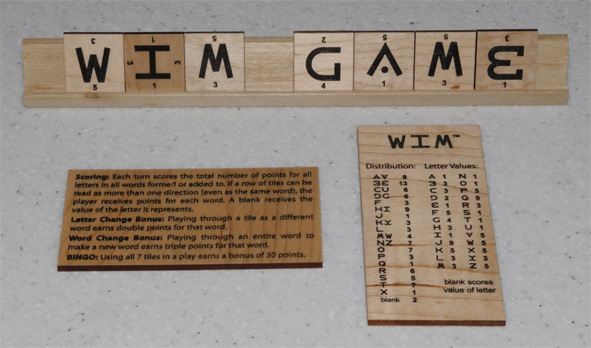
WIM, the every which way word game, is a tile word game invented by Puzzlemaster Roy Leban. Players compete to score the most points by forming interlocking words in all directions, using square letter tiles, most of which can be used in more than one direction or as more than one letter. Players receive bonuses for using a previously played tile as a letter it wasn't used as previously, for changing the orientation of a word, or for using all seven tiles on their rack in a single play. Superficially similar to games such as Scrabble, UpWords, and other tile-based word games, WIM is distinguished by its unique game play, which opens up a number of creative avenues for players. The first major distinguishing feature of WIM is the letters on the tiles, which can be read as different letters in a variety of orientations. There are only 19 distinct tiles to make all 26 letters plus the blank. 8 tiles can make two different letters in different orientations (for example, an N tile is also a Z when rotated 90 degrees, or an M tile can be used as a W upside down). 3 additional tiles (O, S, X) are usable as the same letter in more than one orientation.
WIM is intended for players 10 and up who like word games and word puzzles and are looking for something a bit different or a bit more challenging. For 2-4 players, though the 2-player game works particularly well, as is also true for Scrabble, UpWords, etc. The following images show a sample game from four different directions: 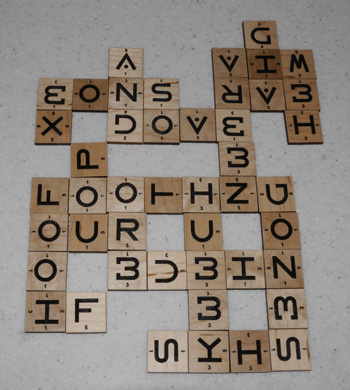 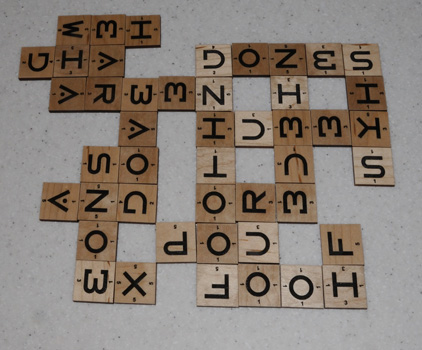 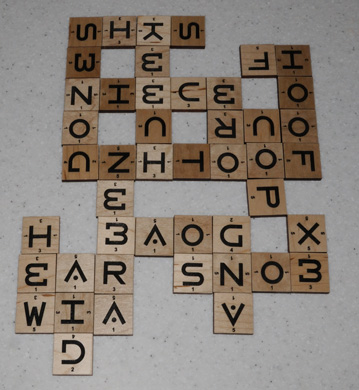 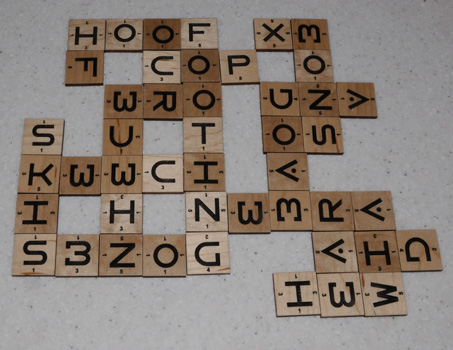 DetailsA set of WIM includes 96 letter tiles, two oversize rule tiles, two tile racks, a rule booklet. WIM was produced in a special edition of laser-etched maple wood, and is not currently available. If you are interested in being notified if a future edition is produced, subscribe to our newsletter. FAQQ. Why isn't there a board?
Q. Have you thought about having a turntable to facilitate game play?
Q. Aren't all these every-which-way letters confusing? It looks pretty complex.
Q. Why don't all the tiles work in multiple orientations? Couldn't you combine the B/E tile with
the M/W tile?
Q. Is WIM an ambigram game?
Q. How complex are the rules?
Q. Do people with dyslexia have problems playing the game?
Q. Are there any puzzles based on WIM?
Q. Can I buy in quantity? Can I license WIM?
WIM and "the every which way word game" are trademarks of Roy Leban. 
The WIM game photographs on this page (and only the photographs) are licensed under a Creative Commons Attribution-No Derivative Works 3.0 United States License. For permissions beyond the scope of this license, please contact us. |